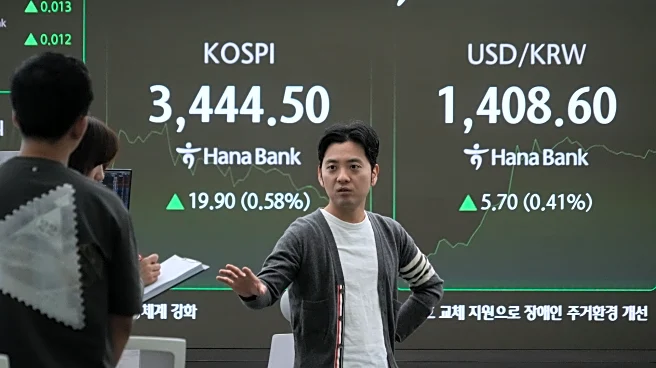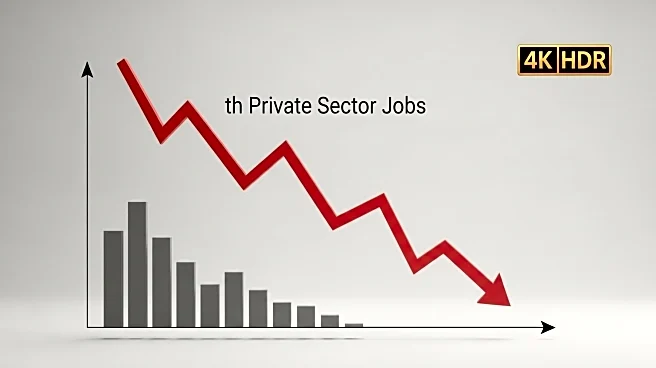What's Happening?
Private payrolls in the United States fell by 32,000 in September, marking the largest decline in two and a half years, according to an ADP report. This unexpected drop comes as the Federal Reserve considers another interest rate cut amid a potential government shutdown that could halt the release of key economic data. The decline in payrolls was significantly below the expected addition of 50,000 jobs, highlighting ongoing labor market weaknesses. The Bureau of Labor Statistics' nonfarm payrolls report, typically more comprehensive, may not be released due to the shutdown, leaving the ADP report as a critical indicator for the time being. The labor market's softness persists despite a 3.8% economic growth rate in the second quarter, with hiring stalled due to economic uncertainties and trade tensions.
Why It's Important?
The unexpected drop in private payrolls underscores the fragility of the U.S. labor market, which could influence the Federal Reserve's monetary policy decisions. A weaker labor market may prompt the Fed to implement further interest rate cuts to stimulate economic activity. The potential government shutdown adds another layer of uncertainty, as it could delay the release of crucial economic data, complicating the Fed's decision-making process. Businesses and investors are closely monitoring these developments, as they could impact economic growth and market stability. The situation also highlights the broader economic challenges faced by the U.S., including trade tensions and policy uncertainties.
What's Next?
If the government shutdown continues, the absence of key economic data could lead to increased reliance on alternative reports like the ADP release. The Federal Reserve's upcoming meeting will be closely watched for any decisions on interest rate adjustments. Additionally, the White House's withdrawal of EJ Antoni's nomination to lead the Bureau of Labor Statistics suggests potential changes in leadership that could affect future economic reporting.











